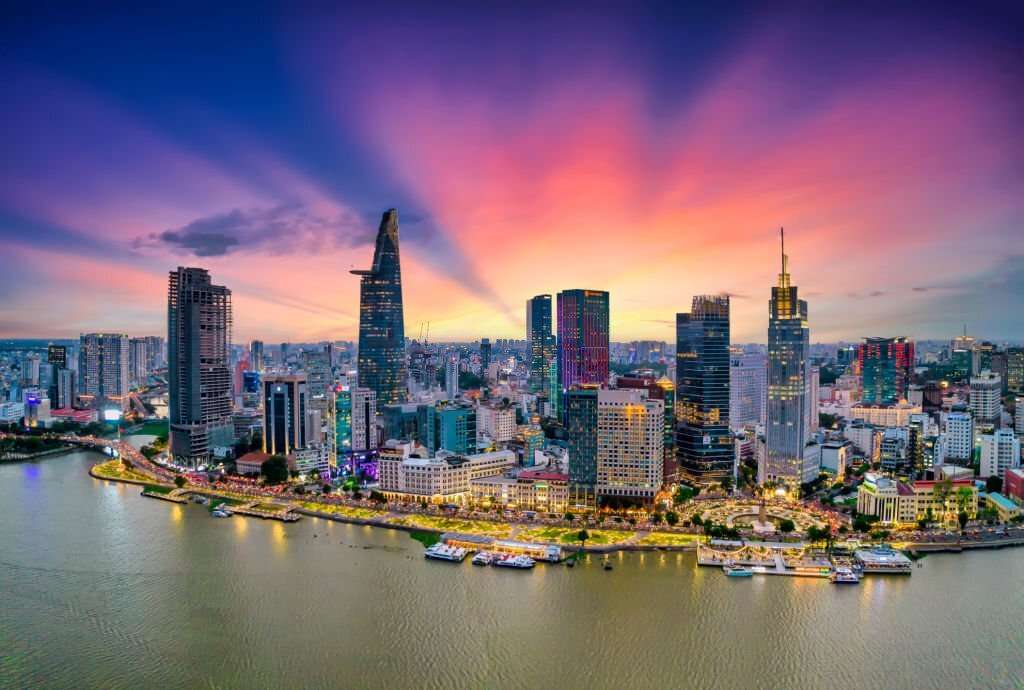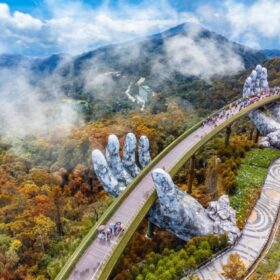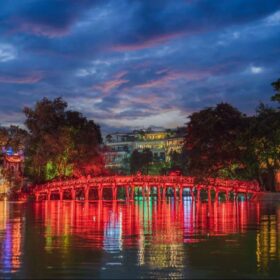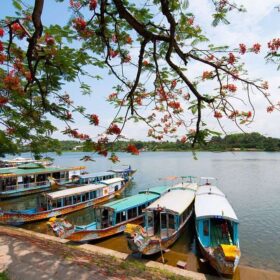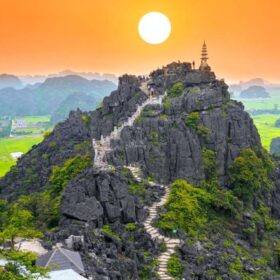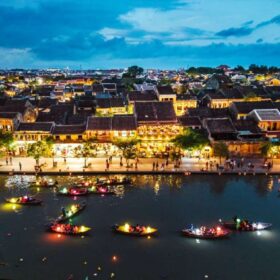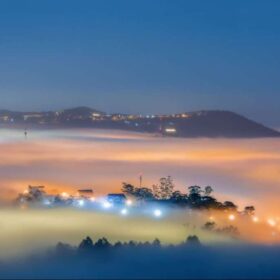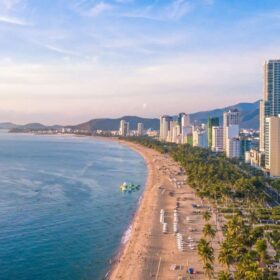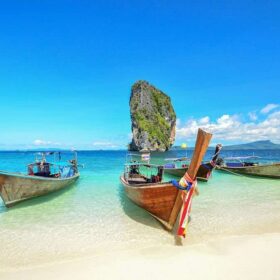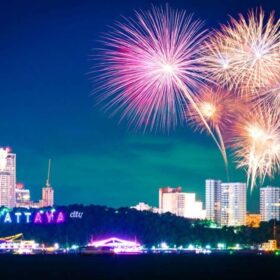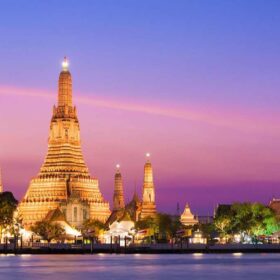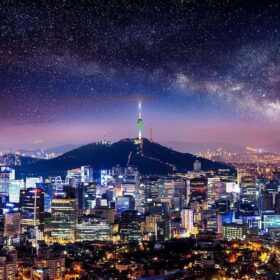Ho Chi Minh City, previously known as Saigon, stands as Vietnam’s largest metropolis, showcasing a vibrant amalgamation of tradition and modernity. Within its bounds, you’ll encounter a rich tapestry of experiences, where sleek shopping malls coexist alongside time-honored markets brimming with an enticing array of local handicrafts and delectable street cuisine.
This dynamic city is also replete with numerous pagodas, temples, and historic landmarks, such as the renowned Cu Chi tunnels (though situated in a rural district far from the city center and not mentioned here). Below, we provide an overview of some lesser known yet equally captivating tourist attractions in Ho Chi Minh City:
War Remnants Museum
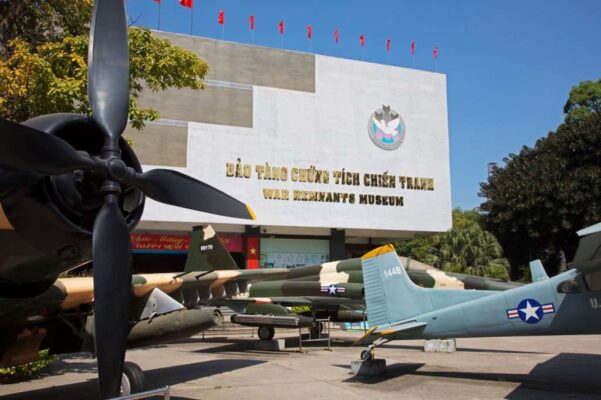
This museum offers Westerners an alternative perspective on the Vietnam War compared to what they might be accustomed to. Originally named the Exhibition House for U.S. and Puppet Crimes when it opened around 1975, it was later renamed the Exhibition House for Crimes of War and Aggression in 1990.
Finally, in 1995, it assumed its current name, the War Remnants Museum. While the majority of the exhibits in this museum are related to the Vietnam War, there are also sections dedicated to the first Indochina War. On its grounds, visitors can view a collection of U.S. armored vehicles, artillery pieces, and infantry weapons.
Reunification Palace
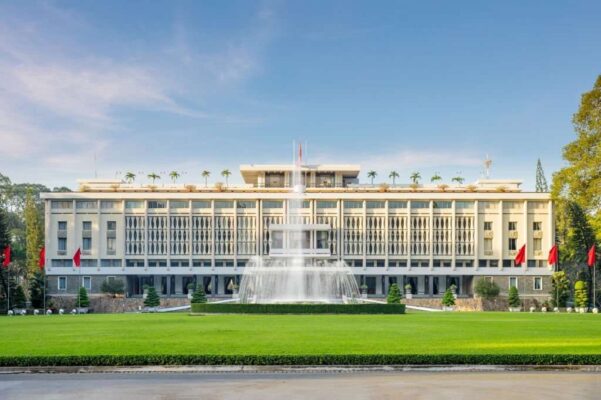
Designed by architect Ngô Viết Thụ, this property once served as the residence and workplace of the President of South Vietnam. In 1975, a North Vietnamese tank crashed through the main gate, marking the end of the controversial Vietnam War.
Today, it is known as Independence Palace, sometimes referred to as the Reunification Palace, and stands as a historical landmark that seems almost frozen in time. Remarkably, two of the tanks involved in the original seizure of power still occupy the grounds, and a replica helicopter graces the building’s roof.
The rooms have been meticulously preserved in their late 1960s and 1970s style. Moreover, this five-story building offers many intriguing features, including an underground bunker with a network of tunnels and a telecommunication center.
Saigon Notre Dame Cathedral
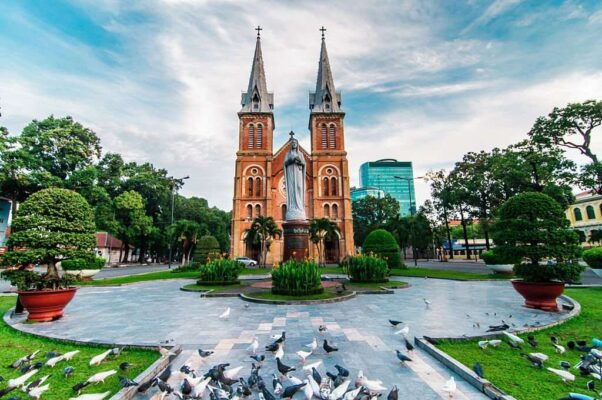
An exquisite example of Neo-Romanesque architecture, the red-brick Notre Dame Cathedral stands as a distinct landmark in the heart of Ho Chi Minh City. Its twin square towers soar nearly 60 meters above the city, crowned by iron spires.
Constructed from 1877 to around 1883, the cathedral was intended to serve as a place of worship for colonial missions and as a symbol of the French colony’s authority.
The exterior is crafted from red bricks imported from Marseille, and the clock situated between the two bell towers was crafted in Switzerland in 1887.
Prominent features of the interior include 56 panels of stained glass by Lorin from Chartres, France; 12 pillars symbolizing the 12 apostles; and one of Vietnam’s oldest organs. To explore the interior, consider visiting in the morning or attending a Sunday mass.
Cu Chi Tunnels

The primary attraction in Ho Chi Minh City is the Cu Chi Tunnels, which served as a hideout for Viet Cong guerrillas during the Tet Offensive in 1968. These tunnels consist of a network of underground chambers extending 30 kilometers from the city. Visitors can explore certain sections of the tunnels and even crawl through the narrow passages to gain a firsthand experience of the conditions faced by the Vietcong during the Vietnam War.
Please be aware that if you suffer from claustrophobia, this may not be an ideal place to visit, as the tunnels are extremely confined.
Ben Thanh Market
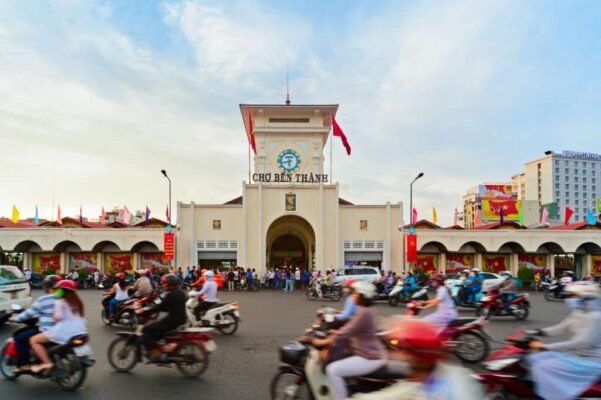
Ben Thanh Market offers a plethora of stalls where visitors can acquire affordable souvenirs and local handicrafts. This vibrant market serves not only tourists but also the local population for their daily necessities, including fresh produce, coffee, and clothing. To secure the best deals, it’s advisable for visitors to compare prices and engage in bargaining with vendors before making a purchase.
Constructed in 1870, Ben Thanh Market is also an excellent spot to savor Vietnam’s local street cuisine. While the indoor stalls within Ben Thanh Market close at night, the surrounding area comes to life with restaurants and outdoor vendors offering a variety of goods to the evening crowd.
Saigon Central Post Office
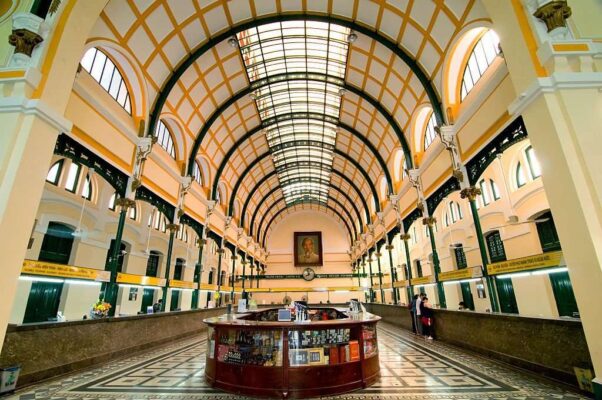
The Saigon Central Post Office is not only an exquisite edifice but also one of Ho Chi Minh’s most ancient structures. Gustave Eiffel designed this building, and its construction commenced in 1886.
Within the grand structure’s concourse, you’ll find several painted maps, and at the end of the spacious hall, there is a mosaic of the country’s former president, Ho Chi Minh. This building boasts an elegant high vaulted ceiling, a beautifully tiled floor, and vintage phone booths. It functions as a genuine working post office and offers free admission. Additionally, the Saigon Central Post Office houses shops where visitors can acquire postcards and other souvenirs.
Bitexco Financial Tower
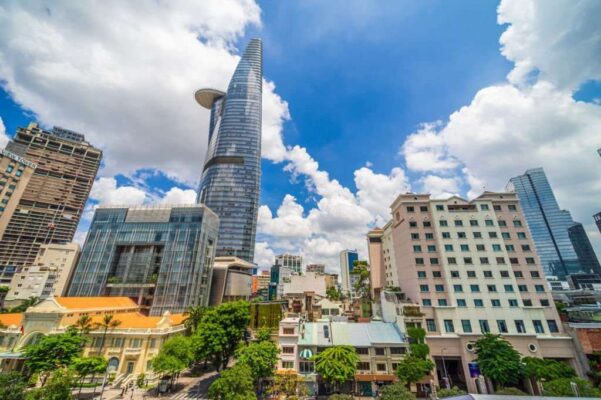
Upon its completion in 2010, the Bitexco Financial Tower, a 68-story, 262-meter (859-foot) high skyscraper, claimed the title of the tallest building in Vietnam. Today, its 49th-floor Sky Deck stands as a popular tourist attraction in Ho Chi Minh City, offering visitors breathtaking 360-degree views of the city and the Saigon River.
On the 50th and 51st floors of the Bitexco Financial Tower, you’ll find two restaurants that also provide stunning vistas of the surrounding area. Additionally, this skyscraper is renowned for hosting the Bitexco Vertical Run, a race in which participants ascend from the lobby to the Sky Deck. Adding to its uniqueness, the tower’s helipad doesn’t sit atop the building like most, but rather cantilevers from the 52nd floor.
Saigon Opera House
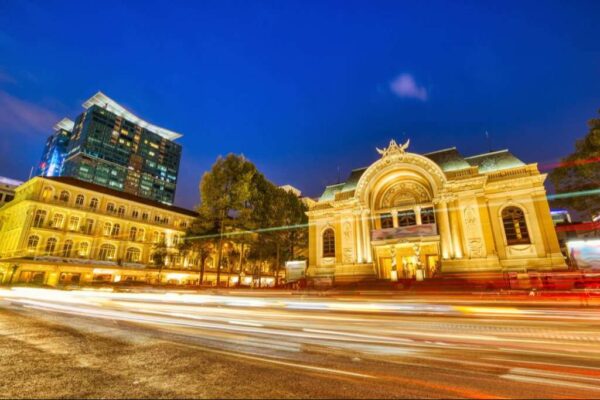
Also known as The Municipal Theatre of Ho Chi Minh City, the Saigon Opera House stands at the beginning of the renowned tree lined Le Loi Avenue, making it a visual treat for architecture enthusiasts, particularly those who appreciate French colonial style. Built in 1897 by French architect Eugene Ferret as the Opera de Saigon, it served as an entertainment venue for French colonists. Its captivating façade bears a resemblance to the Petit Palais, constructed in Paris during the same year.
Following 1956, the building housed the Lower House assembly of South Vietnam, only to be reestablished as a theater in 1975 after the fall of Saigon. To explore the theater’s interior, one must purchase a ticket to a show.
Both the Ho Chi Minh City Ballet Symphony Orchestra and Opera hold performances here, and tickets can be obtained at the box office or through local travel agencies. In the vicinity of the opera house, you’ll find some of the city’s new shopping malls and upscale hotels. A visit here can also be combined with nearby attractions like Notre Dame Cathedral and Reunification Palace.
Dong Khoi Street
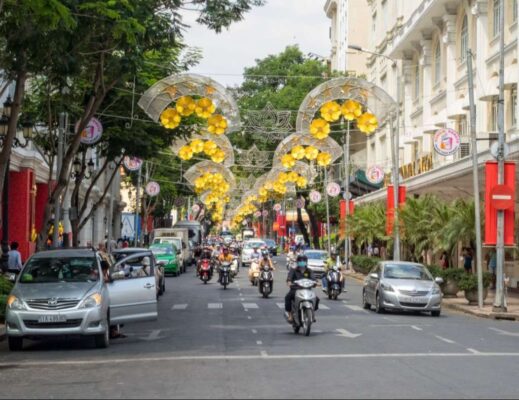
If you’re seeking the finest shopping and dining experiences in Saigon, Dong Khoi Street is the place to be. This street is lined with charming old colonial buildings, upscale boutiques, renowned brand-name stores, delightful cafes, restaurants, and luxury hotels.
Among the notable structures on this street are the Opera House, the Saigon Central Post Office, and the Notre Dame Cathedral. While the famous Givral Café, a beloved establishment in the area since the 1950s, is situated on Dong Khoi Street, it occupies a new building today. The original structure, which had served as a popular gathering spot for international journalists, photographers, and writers during the Vietnam War, was demolished in 2010. A new Givral Café has since opened near its original location.
Binh Tay Market
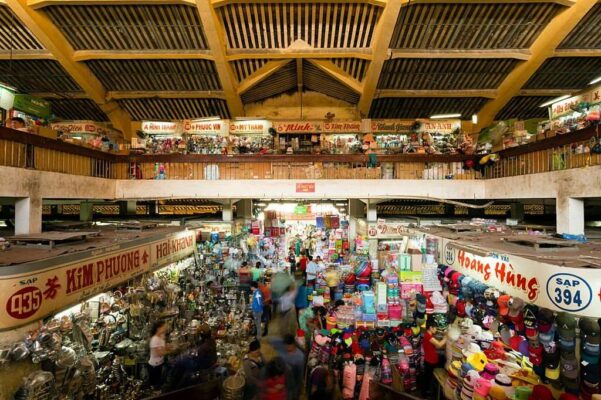
Similar to Ben Thanh Market, Binh Tay Market offers a wide variety of goods, including fresh produce and local crafts. Situated in Saigon’s Chinatown, Binh Tay Market serves as a distribution center for many of the city’s clothing and food products, so some items in its numerous stalls may be available exclusively to wholesalers.
Those who visit Binh Tay Market early in the morning can explore the fresh food offerings in the open-air “wet market,” which includes fish and produce. Additionally, the market features a food court where visitors can taste local delicacies and street food.
Ho Chi Minh City Museum
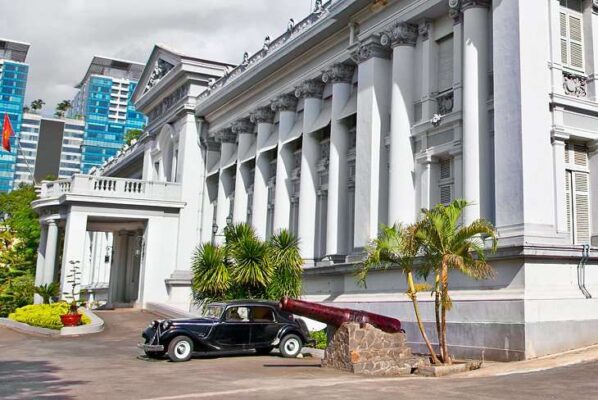
Adjacent to the Reunification Palace, the Ho Chi Minh City Museum resides within a striking Neoclassical structure formerly known as Gia Long Palace, once the residence of Cochinchina’s governor. It’s a worthwhile visit for an overview of the city’s history and to admire the grand architecture, blending Oriental and European design elements.
The museum delves into the city’s past through exhibits covering topics such as the struggle for independence, nature and archaeology, trade, village handicrafts, currency, and Saigon’s culture. Intriguingly, the building is situated atop a network of tunnels and bunkers, historically used as escape routes for dignitaries, though these are not accessible to the public.
Jade Emperor Pagoda
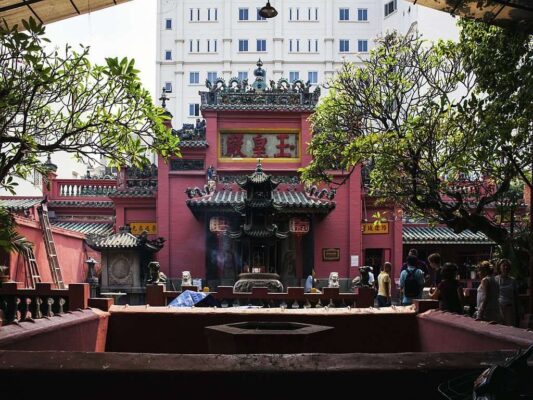
Constructed in the early 20th century, the evocative Jade Emperor Pagoda (Chua Phuoc Hai) is located in a modest neighborhood just a few blocks from the Botanical Gardens. This temple was erected in reverence to the Taoist deity, the Jade Emperor or King of Heaven, Ngoc Hoang, and within its softly lit interior, you’ll encounter numerous depictions of both Buddhist and Taoist gods.
Upon entering, incense envelops the local worshippers, and candlelight reveals altars laden with offerings. Particularly noteworthy are the intricately carved wooden panels and the ornate dragon and animal sculptures gracing the roof.
At the temple’s entrance, a multitude of turtles inhabits a pond, some bearing inscriptions on their shells, earning the temple the nickname “tortoise pagoda.” Local residents frequent this place for worship, so it’s essential to show respect during your visit.
Mekong Delta

Embarking on a leisurely journey through the lush network of palm-fringed channels, rivers, and islands in the Mekong Delta is a popular day trip that offers a stark contrast to the bustling atmosphere of Ho Chi Minh City. It provides a captivating insight into the way of life of the local inhabitants who rely on this delicate water system for their livelihood.
Covering an expansive area of approximately 40,000 square kilometers, the delta is responsible for more than half of the nation’s grain production and a staggering 90 percent of its exports. Notably, it is renowned for its vibrant floating markets, typically bustling in the early morning hours.
Departing from Ho Chi Minh City, these delta tours typically include a 70-kilometer journey to My Tho, a charming market town situated on the Mekong River’s banks. The itinerary typically involves a relaxing cruise through the delta’s waterways, as well as stops at local villages, farms, and factories. The Mekong Delta Discovery Small Group Adventure Tour encompasses these activities, offering opportunities to savor traditional dishes and tropical fruits unique to the region.
Golden Dragon Water Puppet Theatre
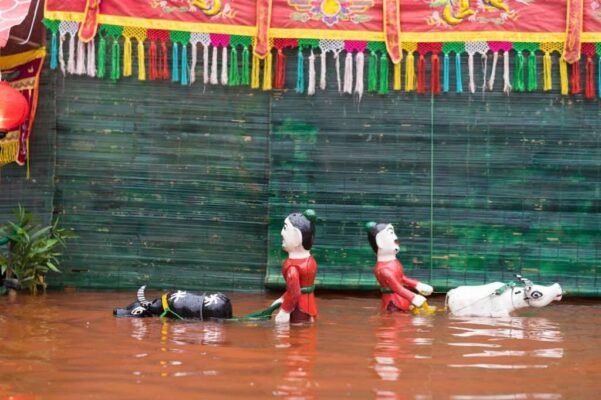
The Golden Dragon Water Puppet Theatre offers delightful entertainment that is perfect for families with young children and anyone who appreciates lighthearted traditional performances. This unique art form, known as water puppetry, originated in the rural villages of the Red River Delta and boasts a history of over 1,000 years in Vietnam.
During the captivating 50-minute show, audiences are treated to a cultural journey that provides insights into the country’s heritage. While the performance is presented in Vietnamese, the expressive puppet characters, representing both people and animals, effectively transcend any language barriers.
To enhance the experience, live music is an integral part of the show, featuring talented musicians playing traditional instruments like bamboo flutes and two-stringed violins. The theater itself is air-conditioned for comfort, and for those seated in the front row, a few gentle splashes may add to the immersion.
Admire the Cao Dai Temple
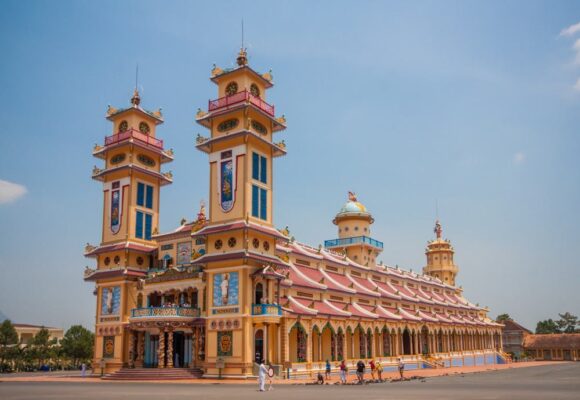
In Vietnam, you can find several Cao Dai temples, but the one located in Ho Chi Minh City is renowned as the most exquisite among them.
The journey to construct the temple spanned approximately two decades, culminating in its grand completion in the year 1956. As you explore the location, you will come across intricately carved dragons that add a touch of elegance. However, the true allure lies in the captivating assortment of religious statues that grace this place.
One can find a variety of religious effigies, such as representations of Christ, Brahman, and Buddha, all housed within a single building, showcasing the diverse faiths of different cultures.
Accommodation: Where to Stay in Ho Chi Minh: Best Areas & Hotels
FAQs
Q: What is the best time to visit Ho Chi Minh City?
A: The best time to visit is during the dry season, which is from November to April. The weather is pleasant, and you can explore the city comfortably.
Q: How can I get around the city?
A: Ho Chi Minh City has a reliable public transportation system, including buses and taxis. You can also use ride-sharing apps like Grab for convenience.
Q: Are there any cultural etiquette I should be aware of?
A: Respect local customs by covering your shoulders and knees when visiting temples or pagodas. It’s also polite to remove your shoes before entering someone’s home.
Q: Is it safe to drink tap water in Ho Chi Minh City?
A: It’s recommended to drink bottled water to avoid any stomach discomfort. Bottled water is readily available at stores and restaurants.
Q: What souvenirs should I buy in Ho Chi Minh City?
A: Popular souvenirs include Vietnamese coffee, silk clothing, lacquerware, and traditional conical hats (non la). Be sure to haggle when shopping at markets for the best deals.

